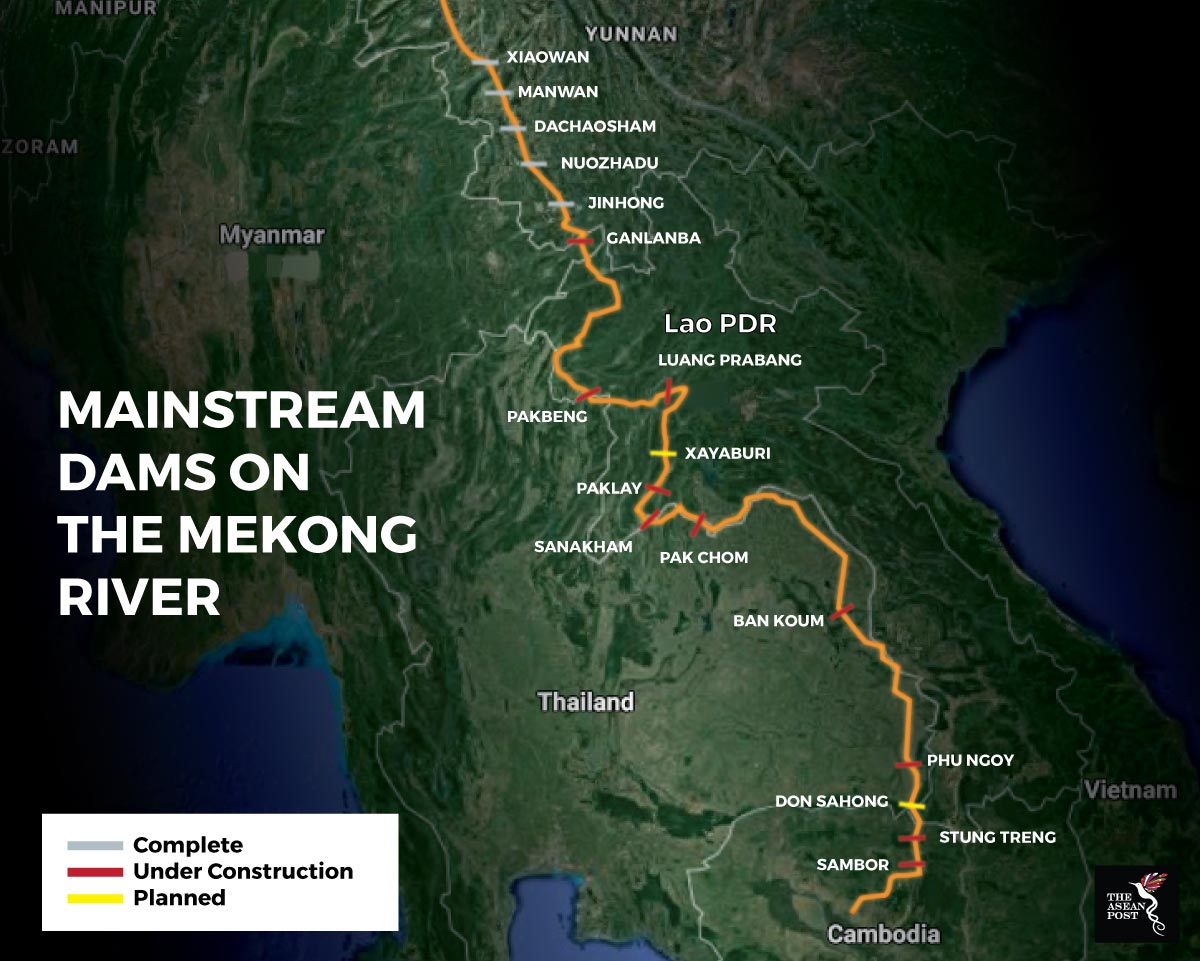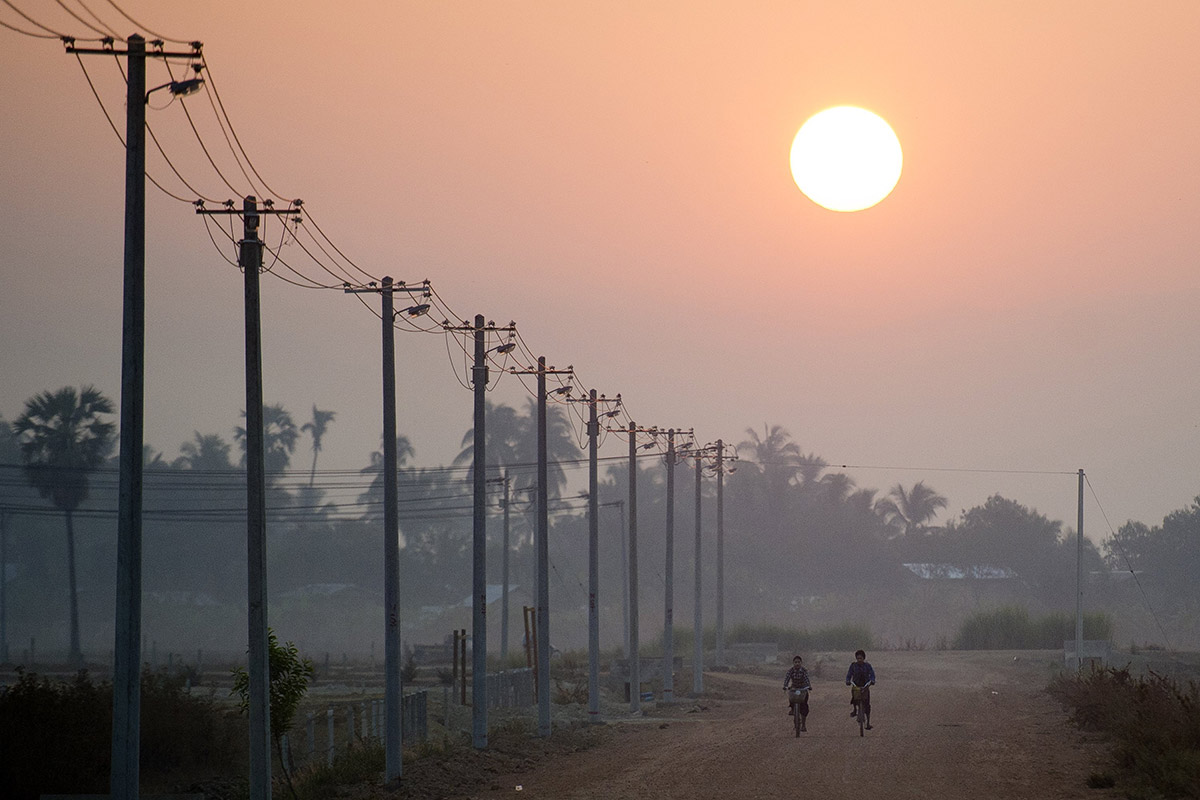The Mekong is Southeast Asia’s lifeblood, pumping life into some of the region’s biggest cities. It is the seventh longest river in Asia and the 12th longest in the world. The 4,350-kilometre river runs from the Tibetan Plateau through China’s Yunnan Province, Myanmar, Lao PDR, Thailand, Cambodia and Vietnam.
The Mekong is important to the region for a number of reasons. First, it acts as an important fishery resource for the countries it flows through. Data from the Mekong River Commission (MRC) shows that fisheries are the main job providers for the Mekong’s population. Fisheries account for nearly 12 percent of Cambodia’s gross domestic product (GDP) – contributing more to the nation’s economy than the country’s rice production. In Lao PDR, fisheries contribute to around seven percent of the nation’s GDP. While the fishery sectors in Thailand and Vietnam aren’t as large, fisheries still contribute over US$750 million to each country’s GDP according to the MRC.
Aside from that, the Mekong is an important source of energy for the region as well as China. International Rivers, a river protection organization, says that the Lower Mekong Basin has a hydropower potential of 30,000 megawatt (MW), while the Upper Mekong Basin – mostly located in China – has a hydropower potential of 28,930 MW.
For the past decade or so, countries along the Mekong have been scrambling for hydroelectric power. According to the International Energy Agency’s (IEA) Southeast Asia Energy Outlook 2017 report, Southeast Asia’s overall energy demand is expected to rise as much as 60 percent by 2040. The report highlighted that hydropower was the biggest contributor from a renewable source to power generation, with capacity doubling to 14 percent of the energy mix in the period from 2000 to 2016.
One of the biggest contributors to the hydropower boom in the Mekong is China. The world’s second largest economy has built six dams in the mainstream of the Upper Mekong Basin. The United States (US) Energy Information Administration (EIA) reported in 2015 that between 2006 and 2011, Chinese investors financed 46 percent of all hydroelectricity capacity additions in Cambodia, Lao PDR and Myanmar. It was reported in Cambodia earlier last month that the 30 hydropower dams currently being constructed in Lao PDR and the seven in Cambodia are predominantly funded by China.

Source: International Rivers
Some experts have even called China’s moves in the region's hydropower sector as “hydro-diplomacy”, implying that it is using hydropower to extend its geopolitical reach in countries which the Mekong passes through.
The development of hydropower in the region has raised concerns among environmentalists. China Dialogue reported in 2017 that Chinese dams on the Upper Mekong Basin are disrupting river flow and affecting fisheries in the lower basins. The report also shows that the changing flow of the river will affect the biodiversity of the Mekong. This could result in negative consequences to aquaculture, landslides, and saline intrusion which would in turn, affect the livelihoods of millions of people.
The building of hydropower plants could also dry up the Mekong Delta. Previously, the Mekong Delta experienced flooding every year which brought with it sand, alluvium and fish. The floods also helped to reduce salinity to make rice growing and intensive farming possible. However, scientists have warned that the proposed construction of three new hydropower plants in the area could reduce total monthly flow capacity by 6.2 percent.
Lao PDR’s ambition of wanting to become the region’s “battery” could also be affected by the proliferation of Chinese dams on the Upper Mekong Delta. The Mekong Eye wrote in 2017 that Lao PDR is expecting to operate 100 hydropower plants by 2020. These 100 hydropower plants will have a combined installed generation capacity of 28,000 MW and an annual power output of about 77,000 million-kilowatt hour (kWh) by 2020. With the increase in energy capacity, Lao PDR is looking to export hydropower energy to Thailand, Vietnam, Cambodia and Malaysia. The Ministry of Energy and Mines in October 2017 claimed that Lao PDR has agreed to sell 100 MW of electricity to Malaysia via Thailand’s power grid and is aiming to export 100 MW of power to Singapore and 200 MW to Myanmar by 2020.
However, the cheap power generated by Chinese dams could affect Lao PDR’s plans.
It was reported last month that the abundance of cheap power from China’s dams will cost as little as US$0.03 per kWh, making it cheaper than buying power from Lao PDR.
The Mekong’s great capacity for hydropower means countries could rely less on more damaging energy sources such as coal or fossil fuels. However, ASEAN as a community has to take a look at the genuine concerns environmentalists and scientists have over more planned dams on the Mekong. If left unchecked, the vibrant communities making a living around the Mekong and the beautiful biodiversity of this majestic river might soon become a thing of the past.
